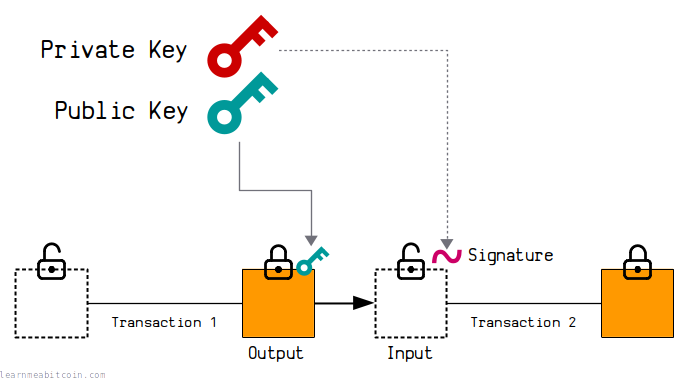Private Key
Introduction to what a private key is and how it is generated.
Overview of Public and Private Keys
Bitcoin and MVC use a key system to control ownership, with the most important elements being the private key and public key.
A public key is used to generate addresses and lock UTXOs, representing the recipient's identity.
The private key is used to calculate and generate signatures, proving ownership and unlocking UTXOs.
As shown in the diagram, in simple terms, the public key is used to lock UTXOs, while the private key is used to unlock UTXOs.

Public and private keys have a one-to-one relationship. A private key can calculate the public key, but the public key cannot be used to deduce the private key. Without the corresponding private key, a valid signature cannot be generated, and thus the UTXO cannot be unlocked. However, verifying a signature does not require the use of the private key; it can be done using only the public key and the signature.
Structure of a Private Key
A private key is a random number, typically a 256-bit random number, which can be generated in various ways, such as using a random number generator or hardware random numbers. The most primitive and secure method of generating a private key is by flipping a coin, with heads counting as 0 and tails as 1. By flipping a coin 256 times, the resulting sequence of 0s and 1s is the private key.
Private keys are usually encoded in WIF format (Wallet Import Format) for ease of recording and storage, but they can also be recorded directly in hexadecimal format.